Adapting Stephen King's Quitters Inc. And The Ledge: Checking The Scratch And Bite Of 1985's Cat's Eye
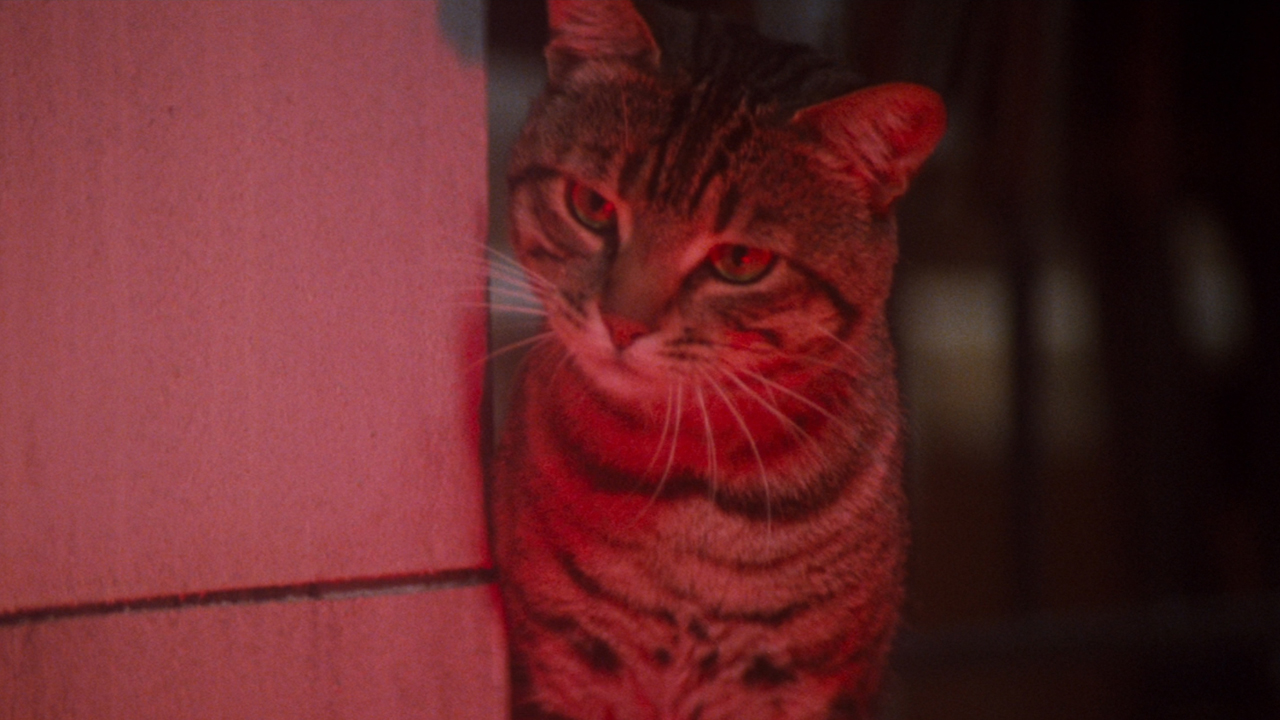
As I first noted in my column about David Cronenberg’s The Dead Zone, producer Dino De Laurentiis was a key figure in bringing multiple adaptations of Stephen King stories to the big screen in the early 1980s – the filmmaker recognizing their awesome potential and making speedy moves to purchase the rights to them. But while The Dead Zone and Mark L. Lester’s Firestarter were projects that came about organically (in that they were inspired by the hit novels they are based on), the origins of Lewis Teague’s Cat’s Eye are a bit more complex, and they involve De Laurentiis being floored by the acting talent of young Drew Barrymore.
De Laurentiis knew Barrymore was a natural star even before working with her on 1984’s Firestarter, as she was about a year removed from her turn in Steven Spielberg’s E.T. The Extra Terrestrial when she was cast, but evidently that filmmaking experience left a significant impression on the him. According to The Complete Stephen King Universe by Stanley Wiater, Christopher Golden, and Hank Wagner's appreciation for the child actor’s promise motivated De Laurentiis to take a special flight out to Bangor, Maine in the run-up to Firestarter’s theatrical release with the intention of pitching King on a script idea – specifically an anthology film that would A) feature Drew Barrymore in every installment, and B) adapt some of the stories to which De Laurentiis had the rights.
Being in the midst of one of the most prolific periods of his career (Stephen King published 14 books between the start of 1980 and the end of 1985), Stephen King took on the challenge and penned Cat’s Eye: an adaptation of the short stories “Quitters, Inc.” and “The Ledge” that also includes a wholly original chapter titled “The General” and an invented wraparound narrative. It has a place in history as being only the second movie based on a screenplay that King himself wrote – but how does it compare to its source material, and how does it hold up by modern standards? Those are the big questions at the heart of this week’s Adapting Stephen King.
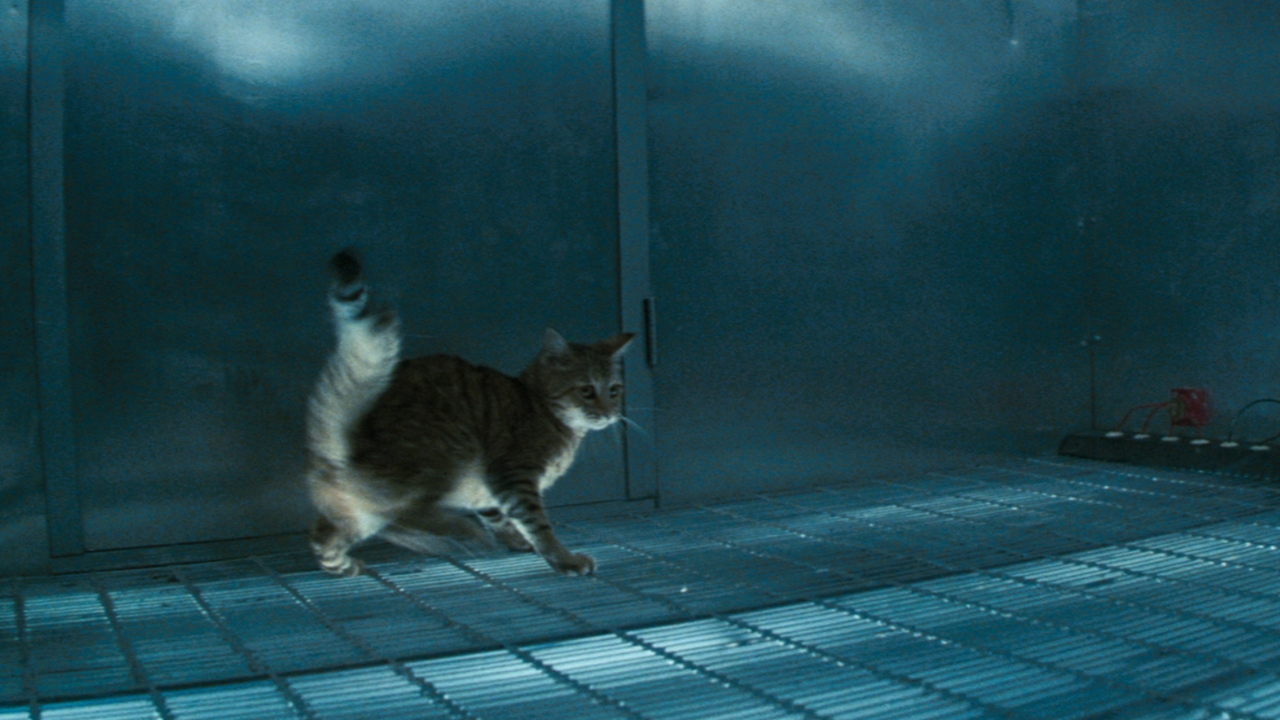
What Cat’s Eye Is About
The first movie produced based on a screenplay by Stephen King was George A. Romero’s Creepshow in 1982, and while that is also an anthology film, it’s one that was made with very different intentions and inspirations. That project was born out of a shared love between Romero and King for the eye-popping horror comics that they respectively consumed in their youth. Cat’s Eye, on the other hand, doesn’t have the same kind of romance and passion backing it; it’s a string of three unrelated stories that are linked together by the journey of a stray cat who bears witness to the events.
Both “Quitters, Inc.” and “The Ledge” were featured in the 1978 collection Night Shift (the former an original piece, the latter reprinted from the July 1976 issue of Penthouse), and have little in common otherwise – though they have a shared dark humor and wryness that has long been an aspect of Stephen King’s writing voice. They are of apiece tonally.

Quitters, Inc.
Given how hazardous it is to your health, smoking is very much a habit worth giving up – but as anyone who has done it can attest, it’s fucking hard. Richard Morrison is one such individual, as he is an addict through and through, but a surprise run-in with his old college roommate, Jimmy McCann, leads him to consider a new program. McCann swears by the effectiveness of a place called Quitters, Inc., but he can say nothing about their methodology due to a strict non-disclosure agreement. Morrison is initially wary about the recommendation given that he’s never heard of the company, but he is surprised to learn that word of mouth alone has kept the business afloat.
A month later the card given to Morrison by Jimmy falls out of his pocket, and being in the vicinity of the Quitters, Inc. headquarters he decides to check it out. Meeting with a consultant named Victor Donatti, the middle-aged smoker quickly learns that the organization is spectacularly serious about getting people off cigarettes, and that their methods are extreme. Morrison wishes to opt out, but he discovers that’s not an option on the table.
Your Daily Blend of Entertainment News
The rules are simple. Over time he is surveilled at various levels of extremity, and if he is witnessed smoking there are specific penalties. Caught once, Morrison’s wife is thrown into a room with an electrified floor. Caught a second time, Morrison goes into the room. Caught a fourth time, an agent is sent to assault Morrison’s son with special needs. And if he gets caught 10 times, Quitters, Inc. relegates him to the two percent of applicants deemed “unregenerate,” and they execute him.

The Ledge
Reading both “The Ledge” and Cujo, one begins to wonder if Stephen King has a specific suspicion/paranoia regarding tennis instructors – given that both stories feature a man in the profession having an illicit affair. But while Steve Kemp is very much an antagonist in the killer dog story, Stan Norris is the protagonist of the Night Shift short, and the victim of an individual guilty of much greater crimes than adultery. Cressner, a wealthy crime boss, has discovered that Norris is sleeping with his wife, and as such he makes arrangements to have the man abducted and brought to his high-rise penthouse.
Cressner fancies himself an eccentric gambler, and so rather than just killing Norris outright he instead offers the man a wager: if Norris can circumnavigate the building by walking along the ledge beside the suite’s balcony, Cressner will not only let him live and let him escape with his wife, but even give him $20,000. And if the tennis pro should decline the offer, the police will be notified that there is a stash of heroin in his trunk (which, of course, has been planted by the kingpin and his men).
Norris agrees to the deal and ventures out on to the ledge, but all the while must trust that Cressner isn’t going to go back on his bet, and also contend with harsh winds, sharp corners, surprise distractions, and a very territorial pigeon.
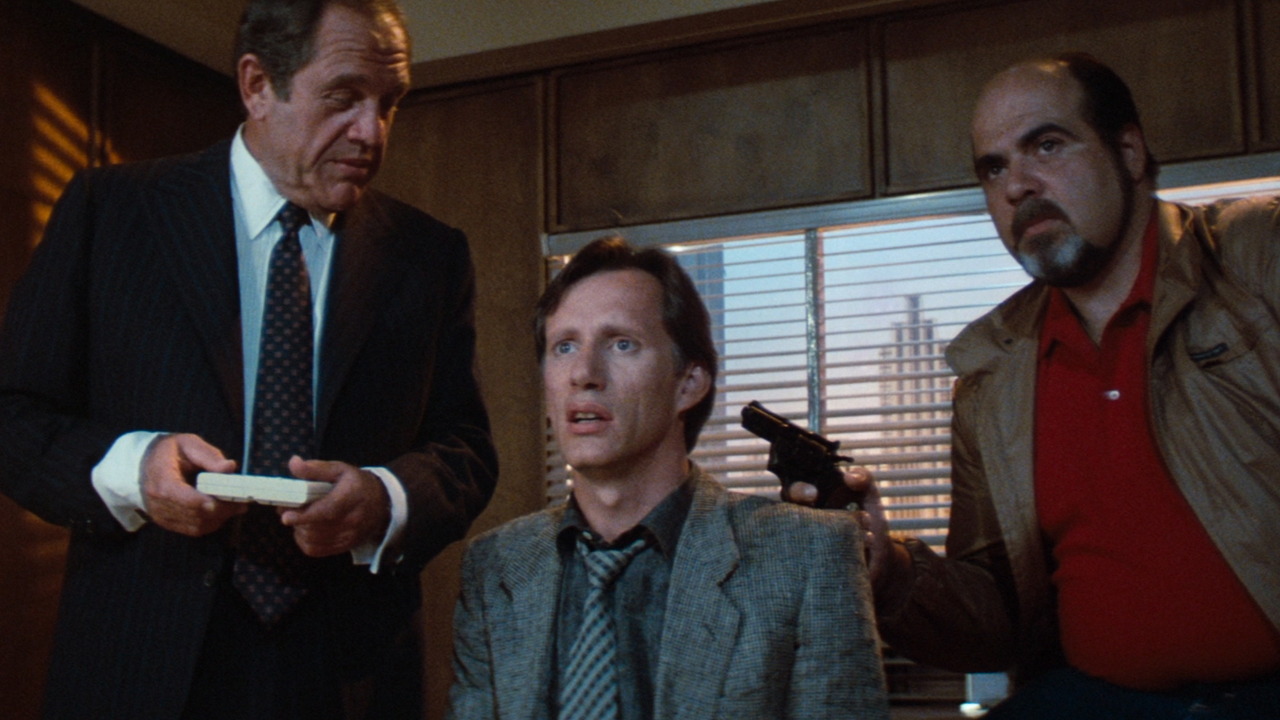
How Lewis Teague’s Cat’s Eye Differs From Quitters, Inc. And The Ledge
First things first: there isn’t a cat in either “Quitters, Inc.” or “The Ledge” as they were originally written by Stephen King. Instead of using a cat, the anti-smoking company instead employs a rabbit when demonstrating how the room with the electrified floor works (it’s actually referred to as the “rabbit room”), and in Cressner’s penthouse there are no animals at all. The feline in Cat’s Eye, who is ultimately named General, is wholly an invention for the film in order to tie the stories together – though he isn’t the only featured change both segments make from their respective source material.

Changes From The Short Story In Quitters Inc.
The “Quitters, Inc.” adaptation in Cat’s Eye features a change right from jump street, as the story opens with Jimmy McCann (Court Miller) driving Dick Morrison (James Woods) directly to Quitters, Inc. – but that’s one of just a small number of deviations from the material as it was originally written. As one would expect from Stephen King adapting his own work, the movie makes very few alterations that aren’t purely practical or simply supplementary, though they certainly do stand out when you are putting the film and the short side-by-side.
On the practical front, for example, the movie version of “Quitters, Inc.” changes Morrison’s mentally challenged son into a gifted daughter, and includes an extra scene with her at school (the self-deprecatingly named Saint Stephen’s School For The Exceptional) as a means of fitting the Drew Barrymore mandate established by Dino De Laurentiis. She never becomes an important part of the plot, and the character is in no way connected to any of the other roles Barrymore plays in the film, but she certainly is... there.
It’s also hard not to notice that Quitters, Inc. in the movie is far less patient than their depiction in the short story. As noted earlier, their policy in the source material is to give clients 10 opportunities to screw up before being executed and filed as “unregenerate,” but as Donnati (Alan King) delivers with powerful menace, the film version only allows four backslides before termination. The reason for this alteration isn’t clear, but it could be as simple as the movie wanting to cut down on delivered exposition.
Some changes are additions, such as the fantastical party sequence featuring a colleague (James Rebhorn) blowing smoke out his ears and children sucking down cigarettes – however, the last deletion I’ll highlight in “Quitters Inc.” is the absence of a great Stephen King punchline. In the short story, the titular company sends Morrison a $5,000 bill for their services, but it also includes a $0.50 line item for electricity a.k.a. the voltage used to torture his wife following the surreptitious drags he winds up taking while stuck in traffic.

Changes From The Short Story In The Ledge
As faithful as “Quitters, Inc.” is, “The Ledge” hones even closer to the original Stephen King story – and not just because it gets the Drew Barrymore moment out of the way prior to the main action of the segment by having her appear as an actress in a television commercial/a ghostly apparition (more on that in a moment) that only General sees. Being a very straight-forward story, there isn’t much for the adaptation to change – though, again, there definitely are some differences that qualify as notable.
For one, Cressner (Salem’s Lot’s Kenneth McMillan) is far more aggressive in his attempts to get Norris (Robert Hays) to fall off the building. As originally written, there is one instance where the crime boss attempts to trip the tennis pro up by rattling him with a noisemaker, but that’s really nothing compared to the horn and the fire hose that are utilized in Cat’s Eye.
Despite notably being a PG-13 movie, “The Ledge” also adds what feels like an R-rated moment – albeit without any shown graphic content. In Stephen King’s short story, Cressner informs Norris that he has had his wife (Patricia Kalember) killed by saying that she is available to be picked up at the local morgue, but the film takes that to a much crazier level by having the vindictive mobster put her decapitated head on top of Norris’ earnings from the wager.
Lastly there is the ending. Getting his just desserts, Cressner is shown to fall from the building in the final moments of the Cat’s Eye segment – foolishly attempting to kick the pesky pigeon away from him – but Stephen King’s short is more ambiguous. Norris has Cressner go out and climb around the ledge, and while it’s left unclear if Cressner will make it, Norris plans to kill him even if he does succeed.
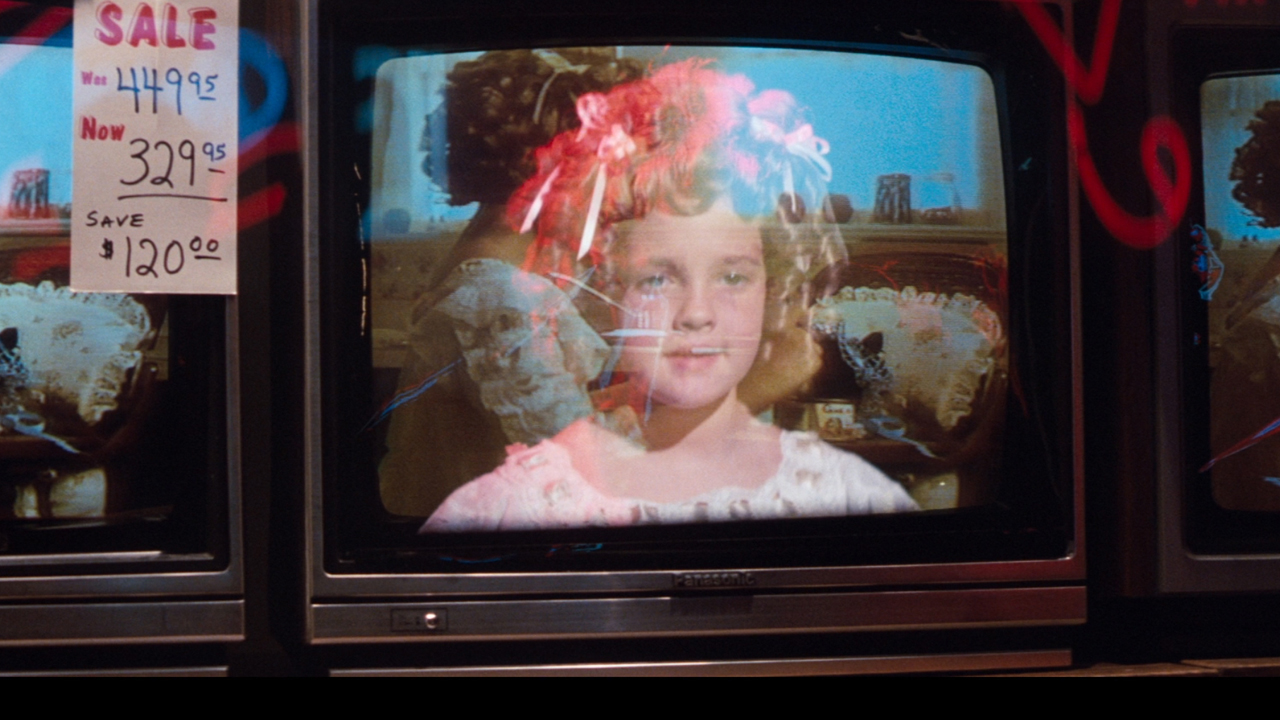
Is It Worthy Of The King?
While this segment of the column is primarily concerned with examining how adaptations hold up compared to their source material, I’ll start by quickly addressing an original aspect of Cat’s Eye that very much requires explanation: the weird visions of Drew Barrymore that General sees while looking into store windows. These moments are mostly nonsensical and unexplained in the movie, but exist because of a prologue sequence that was unceremoniously axed from the film. As originally written, the movie opened with a funeral for a young girl (Drew Barrymore). The girl’s grieving mother, who is superstitious and believes in the myth about cats sucking your breath while you sleep, thinks that the feline is responsible for her child’s untimely passing, and as a result she opens fire on her daughter’s pet with an Uzi.
Executives at MGM weren’t fans of either the movie opening with funeral or the gunplay involving the cute animal, according to The Complete Stephen King Universe, and so the sequence was cut after a few preview screenings – despite the edit leaving aspects of the rest of the movie unclear.
That weird issue aside, Cat’s Eye can be reflected on as the second excellent Stephen King adaptation by director Lewis Teague, who made the film as his follow-up to Cujo. It’s designed as a kind of love letter to fans already hooked on the author’s work – featuring multiple Easter eggs, and promoted with a trailer that unabashedly identifies King as “your favorite novelist” – and it’s made delightful thanks to a quirky and consistent tone that balances sinister and silly in equal measure.
The less that’s said about Alan Silvestri’s aggressive, synth-heavy score the better, but it’s hard to ask for much more than what Stephen King did in bringing his short stories to the big screen. All of the changes the writer does make to the material are to its benefit cinematically – like the added smoker-filled party sequence in “Quitters, Inc.” and Cressner’s fall in “The Ledge” (punctuated with him audibly landing square on the horn he threw from his window). What’s more, they successfully make up for the lesser qualities of “The General,” which is brought to life with some excellent special effects work and animal training, but is far less entertaining and compelling as a story compared to its predecessors in the anthology. It’s a movie that gets better with each viewing, with all of its positives outweighing its negatives.
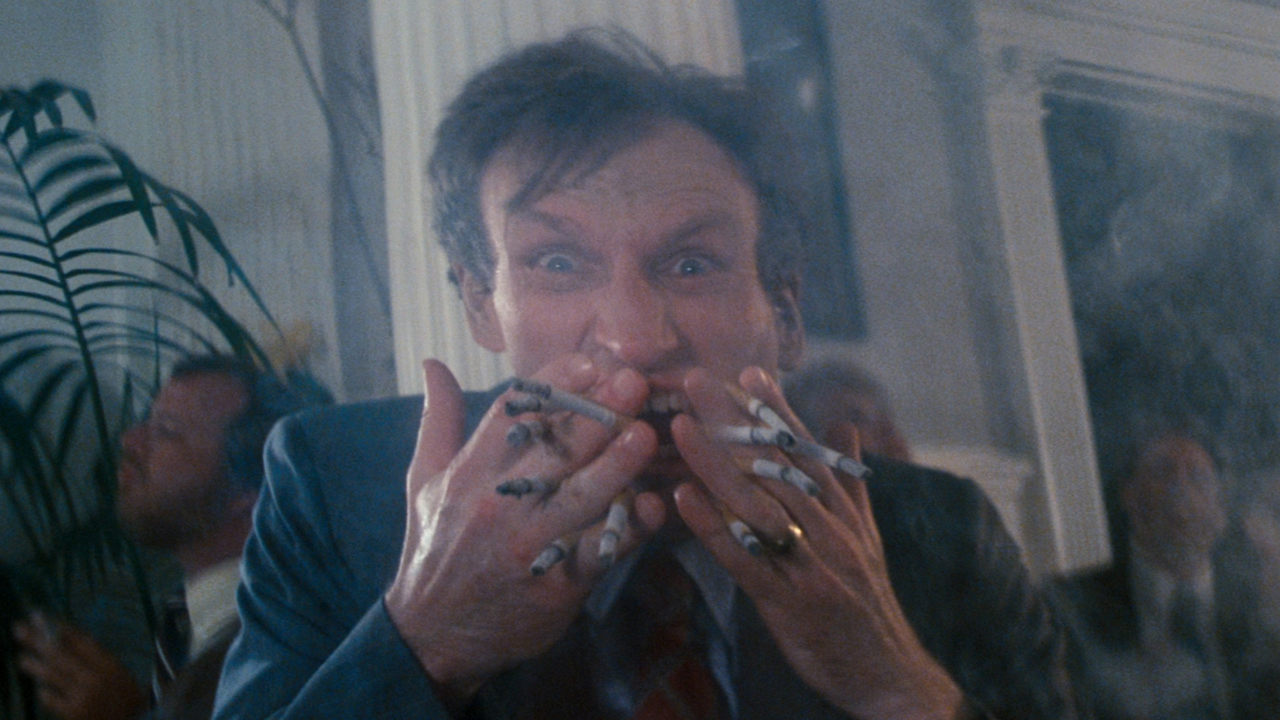
How To Watch Lewis Teague’s Cat’s Eye
Cat’s Eye has been available to stream in the past – available on services including Netflix and Shudder, but at the time that this article is being published that’s sadly not the case. That being said, this isn’t a circumstance akin to Tales From The Darkside’s “Word Processor Of The Gods” in the sense that there are other easy ways to watch. You can rent or purchase digitally at major online outlets, and those of you who are into physical media will have no issue finding a Blu-ray copy for a reasonable price (though you most definitely shouldn’t expect much in terms of special features, as you’re not going to find anything beyond a theatrical trailer).
Looking ahead, the next installment of this column will be examining the beloved author’s first venture into the werewolf mythos with Daniel Attias' Silver Bullet – based on the 1983 novella Cycle Of The Werewolf. The piece will be live on CinemaBlend next Wednesday, and in the meantime you can click through the banners below to find all of my previous Adapting Stephen King features.







Eric Eisenberg is the Assistant Managing Editor at CinemaBlend. After graduating Boston University and earning a bachelor’s degree in journalism, he took a part-time job as a staff writer for CinemaBlend, and after six months was offered the opportunity to move to Los Angeles and take on a newly created West Coast Editor position. Over a decade later, he's continuing to advance his interests and expertise. In addition to conducting filmmaker interviews and contributing to the news and feature content of the site, Eric also oversees the Movie Reviews section, writes the the weekend box office report (published Sundays), and is the site's resident Stephen King expert. He has two King-related columns.
